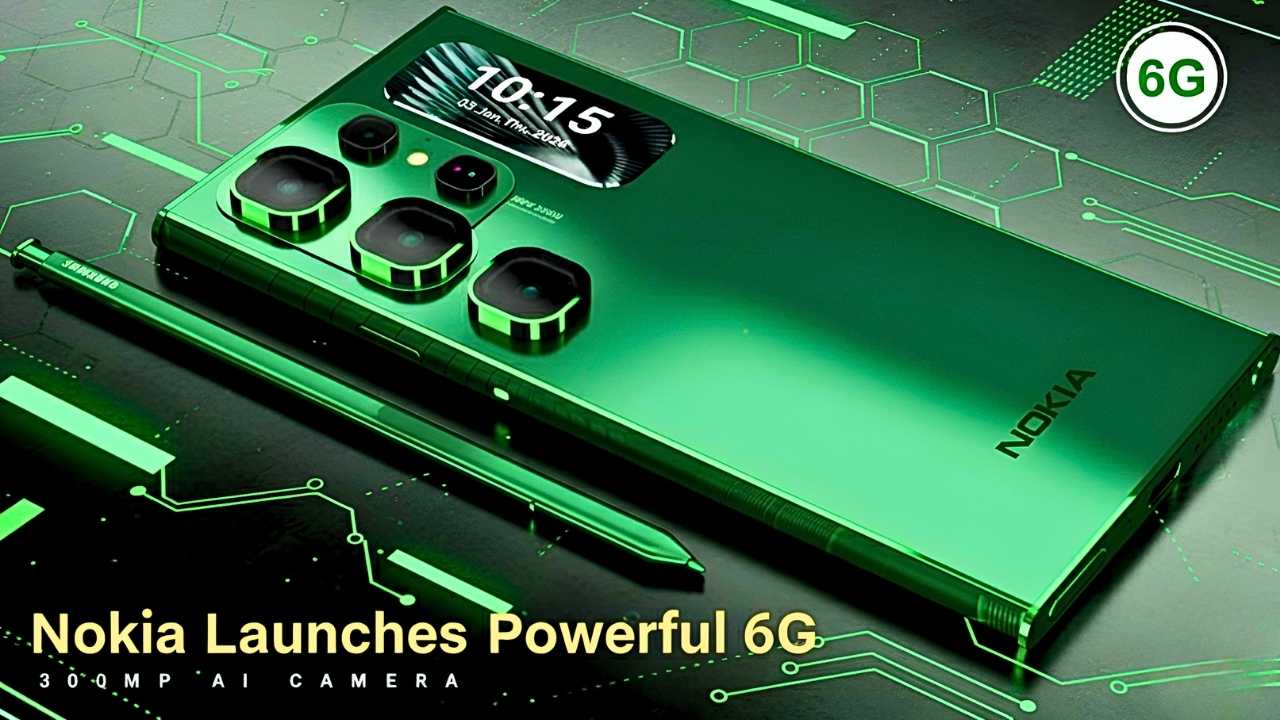2026 Nokia Launches Revolutionary 6G Technology: In 2026, Nokia has once again positioned itself at the forefront of telecommunications innovation with the launch of its revolutionary 6G technology. Following decades of advancements from 2G through 5G, the transition to 6G promises to redefine the way we communicate, work, and interact with technology. Nokia’s new 6G solutions aim to deliver unprecedented speeds, ultra-low latency, and seamless connectivity that will power a new era of smart cities, connected devices, and immersive experiences. This launch signals not just an evolution in mobile networks but a fundamental shift in how digital ecosystems operate in the modern world.
Blazing-Fast Speeds and Unmatched Performance
One of the most remarkable features of Nokia’s 6G technology is its extraordinary speed. Early demonstrations indicate that 6G networks can achieve data transfer rates exceeding 1 terabit per second. To put this into perspective, downloading a high-definition movie could take just a few seconds, and streaming ultra-high-definition content will become entirely seamless, even in environments with multiple users connected simultaneously. These speeds will empower industries such as healthcare, gaming, entertainment, and autonomous transportation by allowing real-time data transmission at scales previously unimaginable.
Beyond raw speed, 6G also delivers extremely low latency, which is crucial for applications that require instantaneous communication. Tasks like remote robotic surgery, real-time virtual reality, and autonomous vehicle coordination demand near-zero delay, and Nokia’s 6G infrastructure is engineered to meet these demands. The combination of high speed and low latency creates an environment where digital interactions feel immediate and responsive, ushering in a new era of immersive connectivity.
Seamless Connectivity for Smart Cities and IoT
Nokia’s 6G technology is designed with connectivity at its core. In today’s rapidly evolving digital landscape, billions of devices from smartphones and wearables to sensors and autonomous drones need reliable, high-speed connections. 6G networks are built to handle this massive influx of devices with unmatched efficiency, supporting a fully connected Internet of Things (IoT) ecosystem. This enables cities to operate smarter, businesses to automate operations more effectively, and individuals to enjoy a seamlessly connected lifestyle.
Smart cities, in particular, stand to benefit from Nokia’s 6G solutions. With enhanced bandwidth and real-time communication capabilities, urban infrastructure can become more responsive and efficient. Traffic management systems can adjust in real-time to congestion, energy grids can optimize power usage based on live demand, and emergency services can coordinate faster and more effectively. The possibilities extend beyond urban environments, with industrial IoT applications transforming manufacturing, logistics, and agriculture by leveraging instantaneous data transmission and decision-making.
Enhanced Security and Reliability
As networks become faster and more connected, security and reliability are critical concerns. Nokia has integrated state-of-the-art security protocols into its 6G technology to protect data integrity and prevent unauthorized access. This includes advanced encryption methods, AI-driven threat detection, and secure authentication systems that safeguard sensitive information across vast networks.
Reliability is another cornerstone of Nokia’s 6G approach. The network architecture is designed to maintain connectivity even in high-demand environments or during infrastructure challenges. This ensures uninterrupted service for mission-critical applications, such as telemedicine, financial transactions, and industrial automation. By prioritizing security and reliability alongside speed and connectivity, Nokia’s 6G positions itself as a trustworthy platform for the next generation of digital infrastructure.
Driving Innovation Across Industries
The impact of Nokia’s 6G technology extends far beyond mobile communications. In healthcare, ultra-fast data transmission allows real-time monitoring, remote diagnostics, and telemedicine consultations that are more precise and responsive than ever before. In entertainment, 6G enables immersive virtual and augmented reality experiences that feel lifelike, from interactive gaming to virtual concerts and sports events. Autonomous vehicles and transportation systems gain real-time coordination capabilities that enhance safety and efficiency, while industrial automation benefits from instantaneous feedback loops and predictive analytics.
Moreover, 6G creates opportunities for research and development, as engineers and scientists gain access to faster data exchange and enhanced computing capabilities. This accelerates innovation in fields like artificial intelligence, climate modeling, and advanced robotics. With Nokia leading the charge, the 6G era promises to transform not only how we communicate but also how society functions at a fundamental level.
Sustainability and Future-Ready Infrastructure
Nokia has also emphasized sustainability in the development of its 6G technology. The network is engineered to be energy-efficient, reducing the environmental footprint of large-scale digital infrastructure. Optimized network performance ensures that power is used intelligently, supporting both operational efficiency and long-term sustainability goals. This focus on eco-friendly design aligns with global initiatives to create greener technology solutions while maintaining cutting-edge performance.
The forward-thinking design of 6G infrastructure ensures that it is future-ready. As new applications and technologies emerge, Nokia’s 6G networks are scalable and adaptable, capable of supporting innovations that have not yet been imagined. This positions both businesses and consumers to take full advantage of next-generation digital experiences without worrying about obsolescence or performance limitations.
Global Implications and Market Leadership
The rollout of 6G technology by Nokia has far-reaching global implications. Countries investing in 6G infrastructure will be better positioned to lead in the digital economy, fostering innovation, economic growth, and technological competitiveness. Nokia’s leadership in this space not only enhances its reputation as a pioneer in telecommunications but also establishes a benchmark for future mobile network standards worldwide.
Nokia’s approach to 6G emphasizes collaboration with governments, research institutions, and industry partners, ensuring that the deployment of this technology is both safe and inclusive. By fostering global cooperation, Nokia aims to create an interconnected world where high-speed, reliable connectivity is accessible to all, from urban centers to remote regions.
Final Thoughts
The launch of Nokia’s 6G technology in 2026 marks a pivotal moment in the evolution of digital communication. By delivering unmatched speed, ultra-low latency, and seamless connectivity, Nokia is redefining the possibilities for businesses, consumers, and societies worldwide. From smart cities and autonomous vehicles to immersive virtual experiences and industrial automation, 6G unlocks a new era of innovation and efficiency.
As the world becomes increasingly connected, Nokia’s 6G technology offers the tools needed to harness the full potential of a digital future. It is not merely an upgrade to mobile networks; it is a revolution that transforms how we interact with technology, how industries operate, and how individuals experience the digital world. With sustainability, security, and scalability at its core, Nokia’s 6G represents a future-ready, transformative platform that promises to shape the way we live, work, and connect for decades to come.




